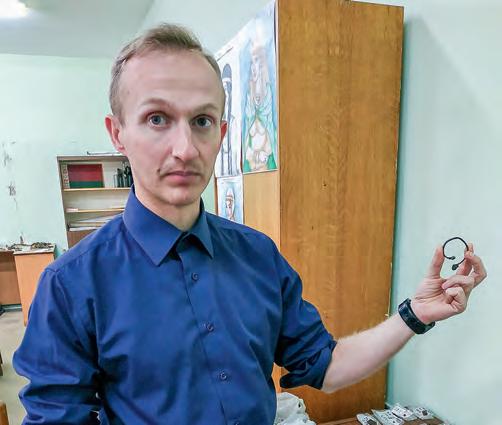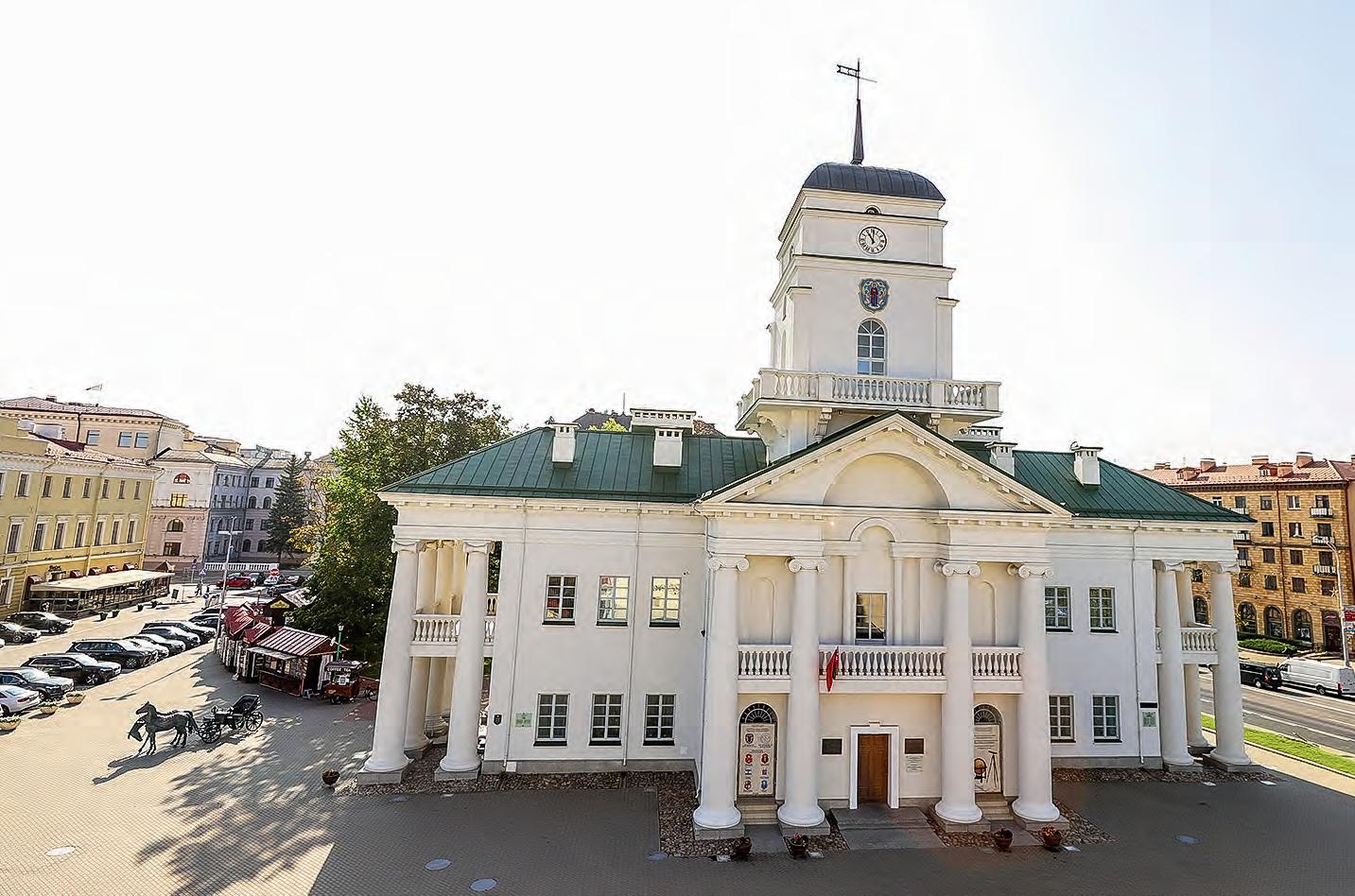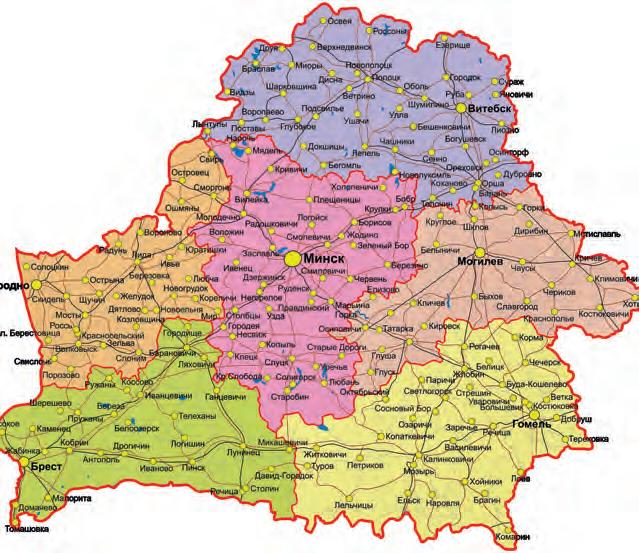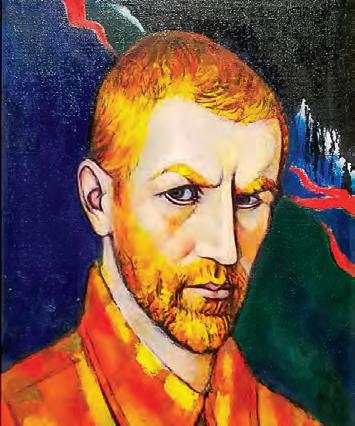
6 minute read
Archeology is an indisputable thing
The office of the research laboratory of archeology of the Mogilev State University named after A. Kuleshov is fully stocked with current finds. Mogilev archaeologists have accumulated as much as 70 kilograms of useful material. The tables are piled with small ceramic crocks, where local experts in some unknown way identify the bottoms, rings and even patterns of pots of the Iron Age.
Discoveries are born here
Advertisement
As I watch the eyes of the instructor and his students light up, I realize there are discoveries. First of all Alexey Avlasovich takes me to the table where the most valuable things found on the current excavation site, i.e. the settlement Ageyevka in the Mogilev Region, are situated. — This is the place where people used to live from the third century B.C. to the second century A.D. Generally, we were looking for items of the Iron Age, but suddenly came across burials of the 17th century,— says the historian.— The fortified settlement remained unoccupied since the 2nd up to the17th centuris and 15 centuries later our ancestors started to dig tombs there. We found human bones and ceramics every time. And so throughout the whole settlement. Nothing was left of the coffins but nails. A small cross was found on a baby, and clothes clasps were found in another grave. Valuable finds from the period of the Iron Age include a bronze jewellery for women and a spindle whorl.
Archaeological excavations are always attended by first year students, but this year we had a lot of volunteers from other courses. Pavel Vasilyonok and Darya Logvinova, third year history teachers in training, took part in excavations not for the first time. — It is interesting to plunge into this life, to live in the field,— says Pavel.— I want to understand how it was there, in the past. — So we came here again to look at our findings,— adds Darya.— Gradually you start to distinguish, where there is a bottom, a wall, and a corolla of the pot. It is great. — There will be enough work for us till spring,— Alexey Avlasovich smiles.— Exactly here archeological discoveries are made. Some moments during excavations can be unclear. And if you lay out the material, each shard is examined, cleaned, then much becomes clear. All of this will come in handy for our studies and scientific research.
They were looking for Slavs, and found ethnic population
No written sources have survived on Ageyevka, so all hopes are set on archeologists. And they have already found out a lot. Ancient people lived in timbered houses with a gable roof, dug on average one meter into the ground. There was a stone hearth in the centre of the dwelling. It is known that the population was engaged in agriculture, also raised cattle for their needs. The main hope of the current expedition was not only to investigate the Iron Age settlement, but also to find traces of Slavs. For example, there are signs of their presence in the 5th century in Mogilev itself. This is the same Pelageyevka (Zmeyevka) near the Dubrovenka River in the city centre. The most striking difference between the Slavs is pottery. They had their own tradition of moulding and shaping pots — elongated, resembling a tulip bud with a slightly bent corolla. — Unfortunately, we could not find Slavs in Ageyevka, it was inhabited by an ethnic population, which can hardly be attributed to any ethnos. The bronze wire ornament that we found could have been an ethnic trait, or it could have been imported. These people used pots with a rough, coarse surface and a slightly bent corolla. There might have been a nail notch on the edge as decoration. These are signs of the Zarubinets culture, i.e. third century B.C., second century A.D. Our material confirmed the already existing tradition and overturned the theory that a more northern archaeological culture of hatched pottery reigned there. We were convinced that in the Mogilev Region, the greater influence was not hatching, but the Zarubinets

culture. The latter then disintegrated and its remains became one of the elements in the formation of the Slavic ethnos. I would like to find a settlement in order to understand on the basis of which tribes the Slavs were formed. While there is a controversial issue here. Theoretically, it was the Kyiv archaeological culture, which partially survived the arrival of the Huns, and some remnants of the Zarubinets culture.
This time, archaeologists learned more about the defensive earthworks. There were three of them in Ageyevka. stored five times,” says the historian.— Supporting logs were placed. And we also came across paving stone blocks. Just imagine, the Iron Age and such a civilization. It was, unfortunately, badly ruined by the graves.
To find the battlefield of Radimichi with the army of prince Vladimir
Among the archaeological sites that Mogilev archaeologists have explored in the past few years there are the burial mounds in the Belynichi District, including the Golovchensky Castle, which was destroyed during the Great Northern War. During excavations in the Slavgorod District archaeologists came across burials of vigilantes of the 10th century from the Radimichi tribe who opposed the prince Vladimir Krasno Solnyshko. — Of course, the annalistic event, when it happened, is the year 984,— Alexey Avlasovich says.— There are different points of view about where the battle took place. Some people think, that in the Gomel Region, others that in the Bryansk Region, and we think, that it was in the Mogilev Region. It was the basic version and now it has been confirmed. The found burials prove that it was on the river Peschanka in the Slavgorod District that the princely army defeated the Radimichi. It remains to find the very field of battle. But we are already very close to it.
The Bobruisk Region is very promising where many sensational finds have been made. One helmet of the tenth century is worth a lot. — Last year Bobruisk became the archeological capital of Belarus because such an amount of weaponry items found there in one year has never been found in the history of sovereign Belarus. Axes, swords of the end of 10th — beginning of 11th century — it was the time of Vladimir Krasno Solnyshko and his sons,— Alexey Avlasovich says.— I wonder where these items came from, what processes took place there. Perhaps there was a chronicle battle, or maybe it was a city we don’t know about. So many items of highstatus weaponry can’t be accidental.
These are the jewelry worn by women in the Iron Age
— We cut through the rampart and saw that it had been re-
Where did the Belarusians come from?
Lately, there have been a lot of disputes about the origin of the Belarusians and our country. Most often, historians and political scientists refer to annalistic sources. But archaeology is an indisputable thing.
— The Belarusians as a people were formed in the 16th century,— says Alexey Avlasovich.— Those monuments that we study are either related to the Old Russian nation or to the beginning of the Slavic ethnos. It is difficult to speak about the Belarusians there. But those who claim that there was no Belarus in the tenth century are wrong. No, there wasn’t, but there were state formations, social structures, which were the first states that gave rise to our statehood. We are studying it now. Not everything is recorded in written sources. Based on them, we can understand the relations among the principalities, the political background Archaeological materials, on the other hand, are unbiased. We excavated them and saw, for example, that Slavs lived here in the V century and there were no Germans. There are no Baltic materials on the territory of the Mogilev Region at all. In the Vitebsk and Minsk Region there are, there the Slavs invaded the Baltic territory and assimilated it. But we had no Balts. There is archaeological material that confirms this. Archaeology peeks in where written sources and objective material are lacking. By Nelli Zigulya
BELTA

Fragments of the residence of the Polotsk princes of the 12 century










